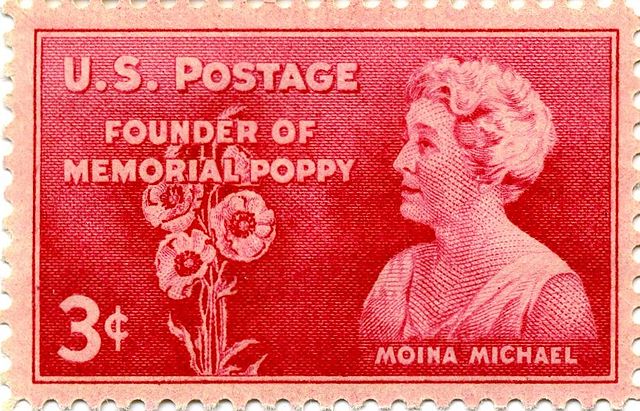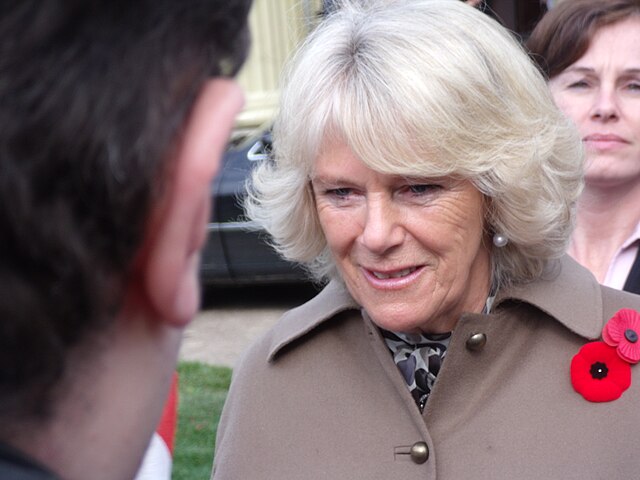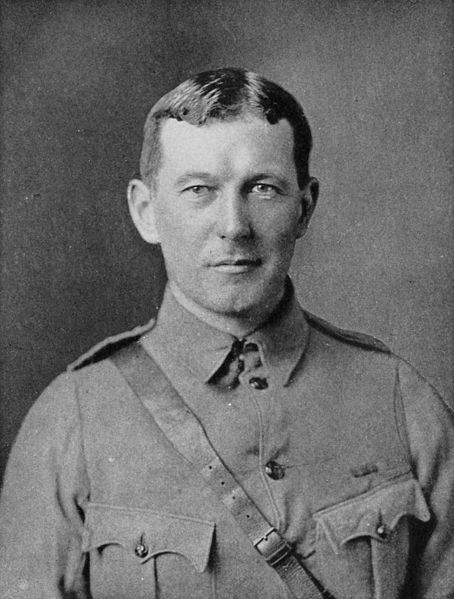A remembrance poppy is an artificial flower worn in some countries to commemorate their military personnel who died in war. Remembrance poppies are produced by veterans' associations, who exchange the poppies for charitable donations used to give financial, social and emotional support to members and veterans of the armed forces.
A Canadian remembrance poppy adorns a memorial with the words to "In Flanders Fields" at McCrae House.
Moina Michael on a U.S. postage stamp. Michael first proposed using poppies as a symbol of remembrance.
1921 British remembrance poppy. Cotton and silk poppies were made in devastated areas of France by Madame Guérin, "The Poppy Lady from France" and the originator of Poppy Day for the widows and orphans of soldiers killed during the war
Queen Camilla (then Duchess of Cornwall) wearing a Scottish poppy (top) and a Canadian poppy (bottom).
"In Flanders Fields" is a war poem in the form of a rondeau, written during the First World War by Canadian physician Lieutenant-Colonel John McCrae. He was inspired to write it on May 3, 1915, after presiding over the funeral of friend and fellow soldier Lieutenant Alexis Helmer, who died in the Second Battle of Ypres. According to legend, fellow soldiers retrieved the poem after McCrae, initially dissatisfied with his work, discarded it. "In Flanders Fields" was first published on December 8 of that year in the London magazine Punch. Flanders Fields is a common English name of the World War I battlefields in Belgium and France.
Inscription of the complete poem in a bronze book at the John McCrae memorial at his birthplace in Guelph, Ontario
Lieutenant Colonel John McCrae was a soldier, physician and poet.
Aspects of the poem were used in propaganda, such as this Canadian war bonds poster
The Vimy Memorial and part of "In Flanders Fields" on a Second World War recruitment poster








